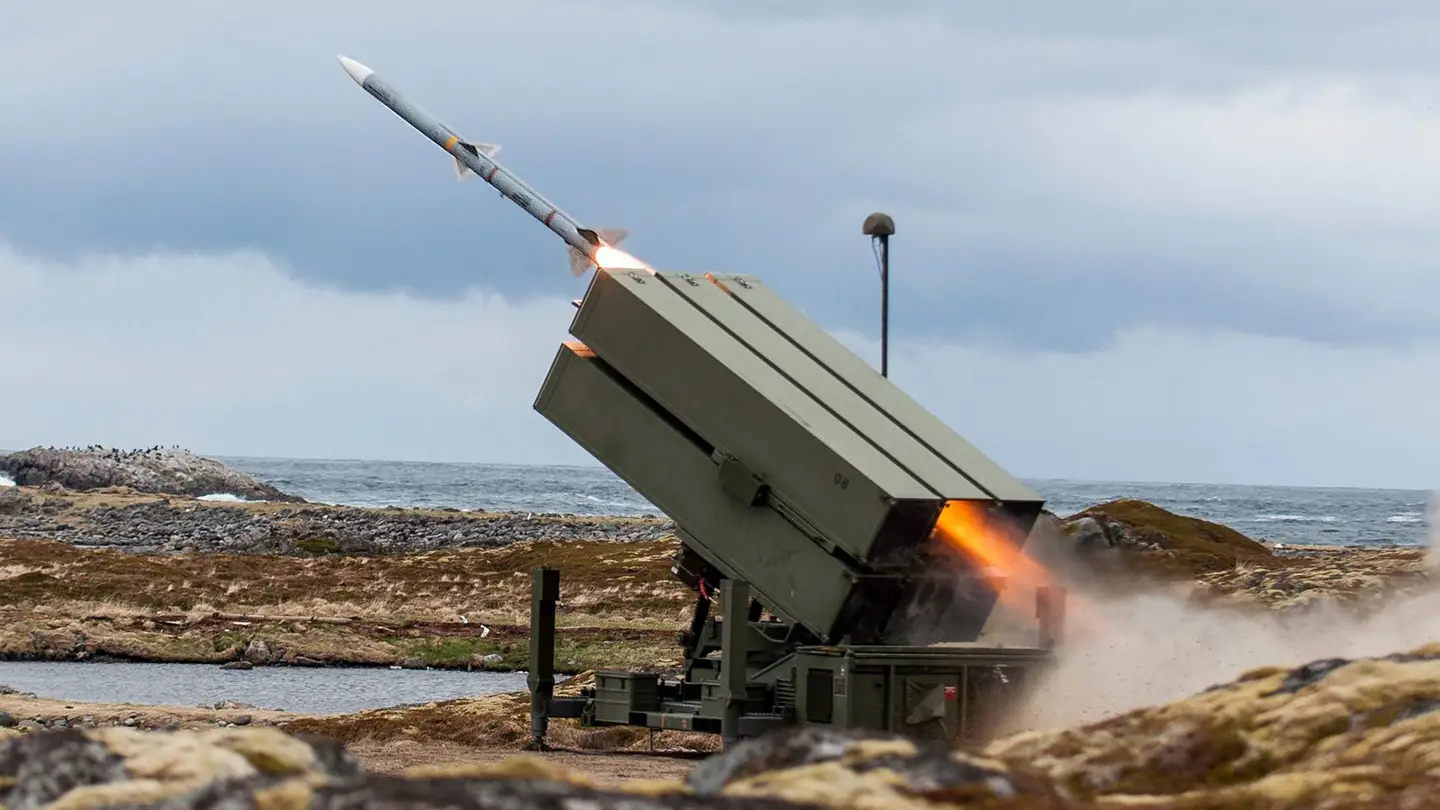The first two National Advanced Surface-to-Air Missiles Systems, or NASAMS, have been installed in Ukraine, but the Pentagon says they have not been transferred to Ukrainian service while troops continue training to operate the air defense batteries.
Greg Hayes, chief executive of NASAMS manufacturer Raytheon, announced during an Oct. 25 appearance on CNBC’s Squawk on the Street that the NASAMS batteries were handed over to the U.S. government weeks ago and are now in Ukraine.
“We did just deliver two NASAMS systems,” Hayes said. “We delivered two of them to the government a couple of weeks ago. They’re being installed in Ukraine today.”
The short interview can be seen in its entirety below.

Pentagon spokesman Air Force Brig. Gen. Patrick Ryder said Ukrainian troops are still training on the air-defense systems and the NASAMS will transfer to their custody once the training is complete.
“As soon as the training program has been completed, which we anticipate will be soon, the two initial NASAMS that are ready for delivery will be passed to the government of Ukraine,” Ryder told The War Zone. “Due to operational security considerations, I am not going to provide any more details at this time.”
Ryder deferred to Ukrainian authorities to make the official announcement that NASAMS have arrived and are operational, although the first indications may come via open-source intelligence showing the missiles being launched at targets and destroyed pieces of them on the ground.
“Coverage of the combat work of anti-aircraft defense of the Air Forces of the Armed Forces of Ukraine is not provided,” the Ukraine Air Force said in a translated statement posted to its Facebook page. “Also this applies to the process of arrival [in] Ukraine of anti-air missiles systems” and specifically mentions IRIS-T and NASAMS. Evidence of an IRIS-T surface-to-air missiles system, which Ukraine received from Germany, surfaced last week.
Several on-the-ground sources in Ukraine relayed the message that they had arrived.
Ukrainian Pravda also posted the news to social media, though accompanied by a picture of a Naval Strike Missile, which is not fired by the NASAMs system.
The Pentagon has promised Kyiv eight NASAMS systems and an unspecified amount of ammunition. Ukrainian officials have been clamoring for more air-defense systems, especially since Russia recently launched a wave of missile and drone strikes targeting cities and power generation facilities. The War Zone delved into the potential advantages NASAMS could provide Ukraine in this piece. Its primary armament, as Hayes mentioned, is the AIM-120 Advanced Medium-Range Air-To-Air Missile (AMRAAM), the same munition used by U.S. and allied NATO fighter aircraft. That means there is a potential steady supply of rounds for Ukraine’s NASAMS systems to fire.
Hayes was answering a question from host Jim Cramer about why the Biden administration has not provided more-capable MIM-104 Patriot missile systems to Ukraine. Those surface-to-air missile systems are deployed in 18 countries “to provide everything from ballistic missile defense to defense against drones.”

Sending Patriots to Ukraine was floated by Chairman of the Joint Chiefs of Staff Army Gen. Mark Milley earlier this month, without saying if they would be provided, when or by whom.
While the Patriot missile system is recognized as a more-capable area air defense capability, there are concerns about whether they can be exported to Ukraine, Hayes said. He said that the White House is concerned about examples of the missile systems falling into Russian hands. The decision on whether to send Patriots to Kyiv’s defense will be made by the National Security Council and supported by the Defense Department, Hayes said.
“Right now, the U.S. government has decided that we are only going to allow NASAMS into Ukraine and not Patriots, but it’s something that we’re talking to them about on a regular basis,” Hayes said. “This is a decision that’s going to be made at the White House, and it’s all about making sure that we provide the Ukrainians what they need to defend themselves, and we’re prepared to do that as quickly as the government allows us.”
“In the short term, it’s going to be NASAMS,” he added. “In the long term, maybe it’s going to be Patriot, but we are prepared to do whatever the government directs us to.”
Contact the author: Dan@thewarzone.com
